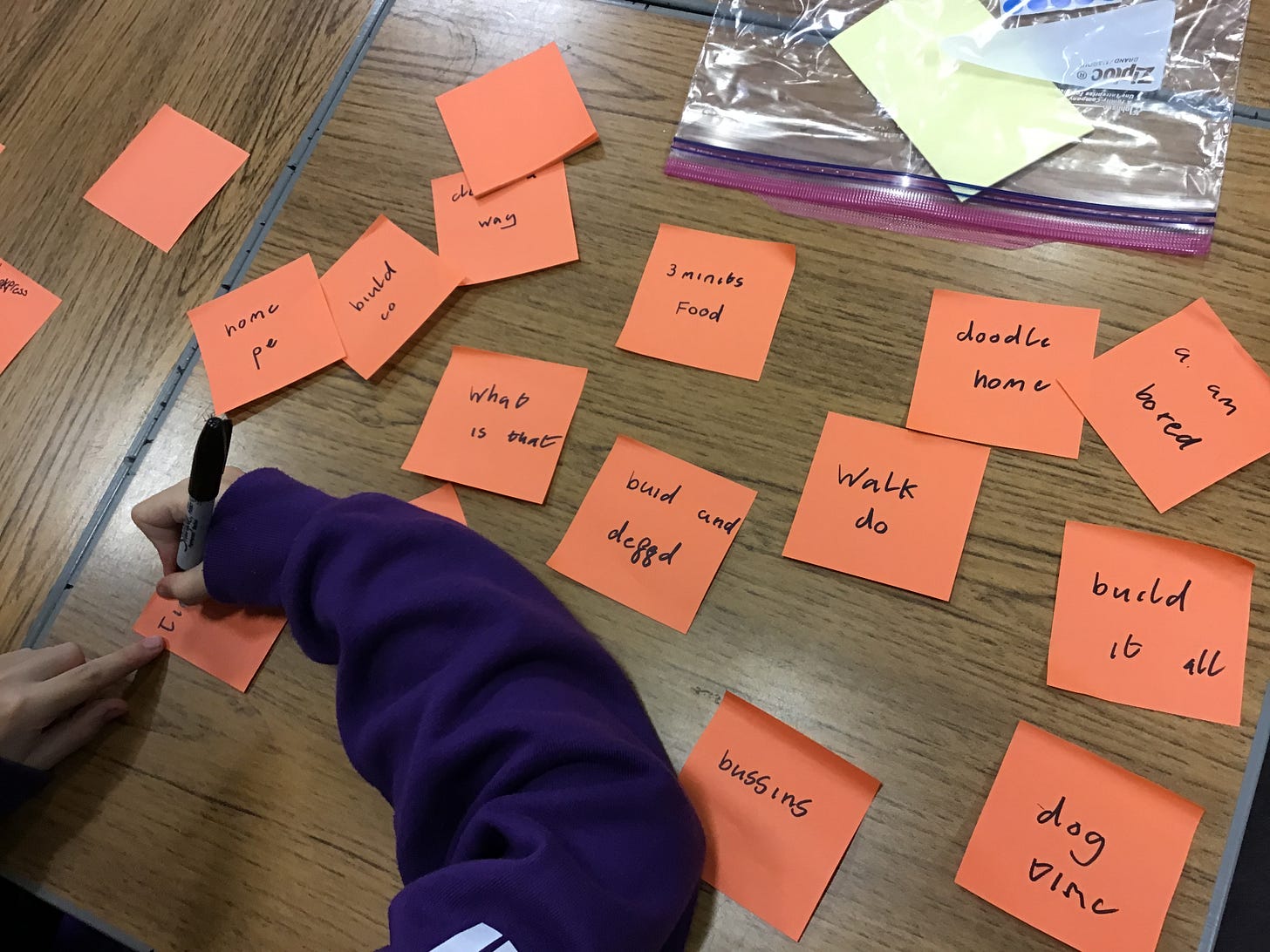10 for 10 is a structured innovation process to maximise the amount of ideas generated for a specific topic in a very short time.
I learned this technique on the AJ&Smart Workshopper Master programme and the first time I tried it was with a class of 11 year olds. I was running a ‘mini design sprint’ as part of a programme where parents would come in and talk about their careers and businesses. The class was split into 5 design teams all tasked with finding a new digital product and the first stage was 10 for 10.
Better than Brainstorming
Standard brainstorming has a couple of problems:
Limits to the quantity and quality of ideas. The conversation is dominated by the loudest and most confident people which means the (probably great) ideas from introverts and quieter people are missed.
Risk of focussing on the wrong idea. An idea that sounds good on the surface can be latched onto and focussed on before having found other ideas that might be better.
10 for 10 avoids these issues by following the principle of Together Alone. Rather than randomly shouting out or sticking up ideas, each person is challenged to come up with at least 10 ideas in 10 minutes by themselves.
By the way, these are the top voted ideas from the 11 year olds…
A search engine hooked up to your streaming platforms so that you can find what to watch without logging into them all individually
A website to give you recipes based on what ingredients you have
An immersive virtual reality equivalent of Amazon
An online store / aggregator to find clothes you like at the best prices
Affordable video editing software
How to do 10 for 10
Have sharpies, post-its and sticky dots.
Emphasise to the participants that this is about getting as many ideas as possible, it’s not about the quality at this stage.
Set a timer for 5 minutes and ask the participants to produce at least 10 ideas. 1 idea per post-it.
Put all the post-its on the wall and remove duplicates
Give each participant 10 sticky dots to vote with. Set a timer for 3 minutes and ask them to vote for the ideas they like the best. They can put multiple dots on ideas they really like.
Take the 10 ideas with the most votes and place them in priority order, with the most voted idea at the top
Done :)
10 for 10 is a key part of the Product Discovery Lab that my company Bright 7 uses to help teams come up with ideas to improve their products and services.
Thanks for reading!
Iain


